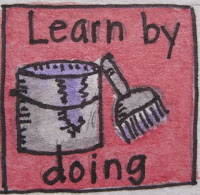Thomas Edison
American Inventor
This felt like a good quote this week! One of the things we ask our Gold Award girls to do, is to identify an issue, brainstorm a possible solution, gather a team and put the plan into play.
But what happens when that great idea has no traction? No organization wants to partner? The solution to the need, while a good idea, just doesn't fit? What does the girl do then?
This happened with one of our girls last summer, working on the Girltopia Take Action Project. Her issue was about domestic violence, and she had an idea about a project that she would like to do for a local shelter. She thought she had some initial buy-in from the organization, so she started her plan, gathered her team and did the needed steps to start the work.
Turns out, the organization didn't want/need what she wanted to do! It was truly frustrating, and while not a waste of time, it certainly didn't yield the result the girl was hoping for. She was soooo disappointed, especially because she only had the one plan to pursue. She had put all her eggs in one basket, so to speak, and she lost them all!
Thomas Edison would probably have suggested that once the issue was identified, it would have been a good idea to ALSO identify several possible solutions or plans for how to address it. So that if the first doesn't work, there's some groundwork to fall back on. Plan B can become Plan A.
Is this a good idea for our Gold Award girls? Is it good tool to use as we work with these girls: to try and get them to think of several possible ways to address the issue? Not trying to make more work for anyone here, that's for sure. But, perhaps it's a good idea at the beginning of the process. It might lead to a deeper and more complete understanding of the complexity of some issues.


